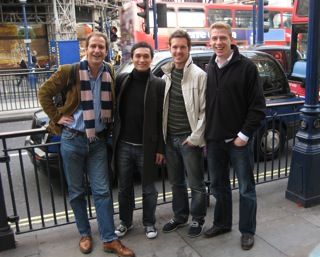The German Academic International Network (GAIN) 1 informs German researchers working in North America about research opportunities in Germany. The implied intention is to lure German researchers back to Germany.
Front Matter
Conference 2.0 – A scheduled meeting of people sharing a common interest that takes advantage of Web 2.0 1 concepts. Scientific conferences are essential both for the exchange of ideas and for networking. But they don’t have to be organized the same way as 10-20 years ago. Web 2.0 tools now allow much broader user participation before, during and after the conference.

In the last few months we have seen an ever increasing number of new social networking (Web 2.0) sites for scientists. Good Web 2.0 tools for scientists primarily try to solve a problem. But by adding a social aspect, they will gain useful features that would otherwise not be possible. Eva Amsen has recently written a great blog post about this1.
The just finished conference Science Blogging 2008: London was a wonderful chance for real-life socialising networking. I started to upload some fotos to Flickr (e.g. Scott Keir explaining sign language, see all fotos tagged sciblog here), some of them are too embarrassing and I will keep them for bribes reference later on. The meeting was also a great opportunity to think about where we are today with scienceblogging.
This blog entry is primarily intended for science educators that are interested in starting a blog for their teaching activities. Some of them will not be familiar with blogging and other web 2.0 tools. Not the typical audience of this blog, but I would greatly appreciate feedback, as I'm in the process of writing an article about this topic (in German). What is blogging and all this web 2.0 stuff?
Most scientific papers are now published in English, and I believe that this trend is good for international collaboration. Therefore I believe that blogs intended for scientists should also be written in English.
Like many other blogging platforms, Nature Network uses Textile to format blog entries. Textile is a markup language, and Andrew Sun has nicely put together the most important tags in this blog post. Unfortunately, Textile doesn't much help with formatting that is specific to science blogging. Specifically, there is no standard way to link to journal articles.
A year ago today I wrote my first blog post on Nature Network (Open access may become mandatory for NIH-funded research). This is blog post #84 one year later and a good time to reflect on the experience. In May of last year I started the science blog in a nutshell, hosted on my own server and written just for fun. I discovered Nature Network in July and started Publish or Perish 2.0. In November 2007 I changed the blog name to Gobbledygook.
In 2005 registration of clinical trials in publicly available databases before the first patient was entered became mandatory for papers submitted to the most important medical journals. In September of last year, U.S. President Bush signed the Federal Drug Administration Amendment Act (FDAAA) into law.
The British Medical Journal this week published Open access publishing, article downloads, and citations: randomised controlled trial by Phlip Davis et al. There are already several publications that looked at the full paper downloads and citations of open access papers compared to closed access papers.
